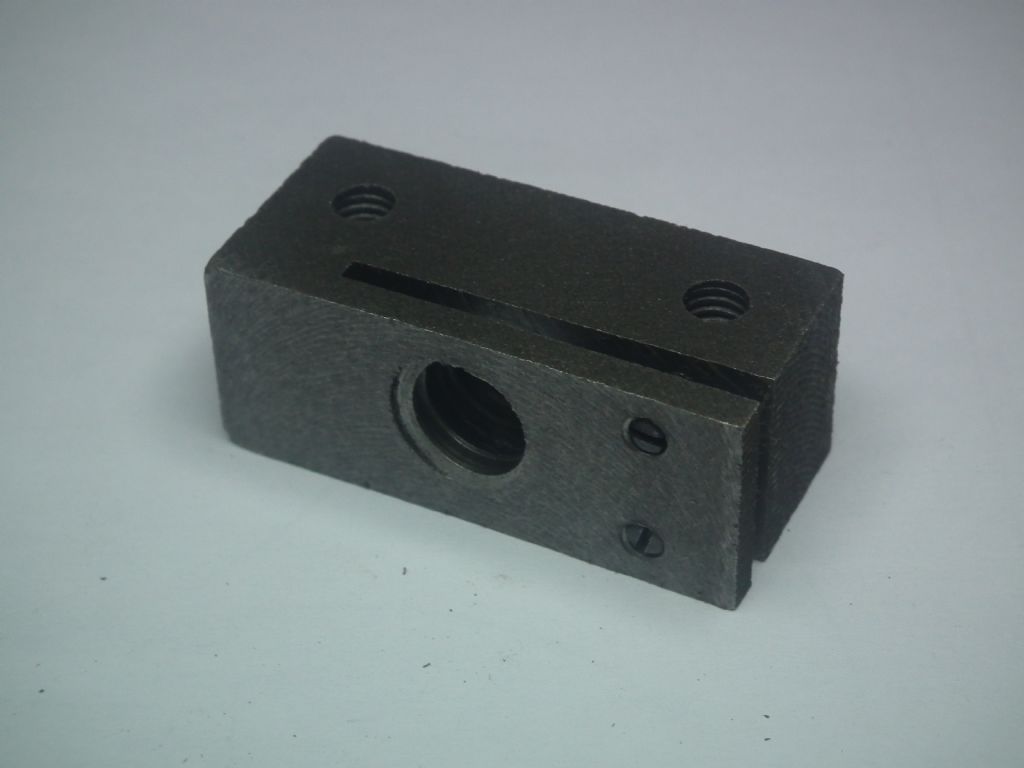Thanks for all the input today chaps – really appreciate the info.
Will look into seeing if I can get one of those bonnet struts John. I'll try to get the same thing or for a similar size car at least since it could be easy to buy a random one and have it too strong/not enough etc.
I've never heard of that loctite as described – sounds weird so I'll look that up, thanks Michael. I like the idea of the pin insert type grub screws so I will see if I can obtain some of them in the uk.
Annoyingly it seems that the table arrangement on my X2 is not like that of the X1 alas. On my machine the lead screws have a brass screw nut that is not split, and cannot be tightened in that respect.
The brass nut on the X/Y is not bolted to anything, but rather sits in a slot in the table castings, and has a grub screw to push against it to an extent. Not sure if this is much use but I shall clean it all up, oil it, and reassemble taking that into account, and see if I can get anywhere with meddling with it. Currently I get about 8-10 thou backlash on the table!!
Russell – how is the end float adjust on the lead screws? Sorry if I'm missing the obvious! Is that via your addition of the thrust washers? Like the idea of that but I wouldn't be confident at this stage of doing a good job trying to machine out the housings to accommodate them.
The delrin screw nuts are a good idea so I'm wondering if I can do something similar with mine.
Interestingly, the opposite end of the lead screw to the handle has a large slot machined in it for something (on the X axis anyway, but not Y), yet there are not parts anywhere near it. As mentioned, the lead screw is all over the shop on the X as it is held in place by the hand wheel and bushing/bearing at that end, and slightly by the brass lead screw nut, which itself is not really held as such. So support for the screw opposite the handle end is non existent basically.
I'd love to add a bracket & bearing of some sort as I bet it would make it smoother and easier to adjust where I can, but not sure how feasible that is.
John – LOVE the thought of fitting DRO kit to it, and was looking at roughly what it might cost minimum to do that last night, but it looks like around £300-400 to do that and there's just no way I can do that any time soon as I've no budget really at the minute and have been spending on other stuff recently. I think I'd be divorced if I did anyway!!
That said, with yours, do you mean you've fitting standalone DRO slides/gauges, rather than an all in one solution with a central display thing? That looks like a much cheaper option and I guess I could afford to do one axis at a time over a few months perhaps….
I got the DRO conversion kit for my C3 lathe from Arc and I love it I must say. 
Danny M2Z.








